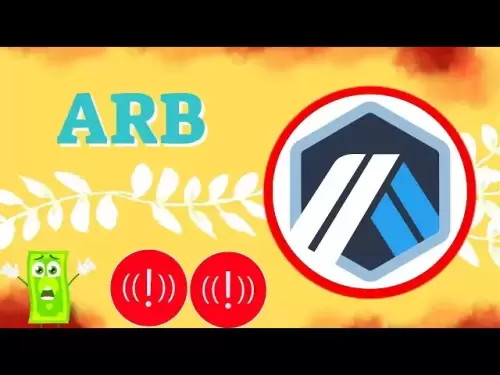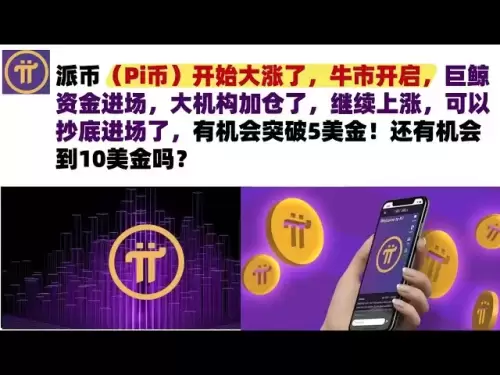-
 Bitcoin
Bitcoin $116700
0.48% -
 Ethereum
Ethereum $4213
6.27% -
 XRP
XRP $3.280
1.22% -
 Tether USDt
Tether USDt $1.000
0.02% -
 BNB
BNB $805.1
2.46% -
 Solana
Solana $180.2
2.65% -
 USDC
USDC $0.0000
0.02% -
 Dogecoin
Dogecoin $0.2412
8.50% -
 TRON
TRON $0.3356
-1.11% -
 Cardano
Cardano $0.8108
3.59% -
 Hyperliquid
Hyperliquid $43.89
8.53% -
 Chainlink
Chainlink $21.15
10.75% -
 Stellar
Stellar $0.4502
1.41% -
 Sui
Sui $3.935
4.69% -
 Bitcoin Cash
Bitcoin Cash $570.7
-1.75% -
 Hedera
Hedera $0.2636
3.28% -
 Avalanche
Avalanche $24.25
4.48% -
 Ethena USDe
Ethena USDe $1.001
0.03% -
 Litecoin
Litecoin $122.0
-0.08% -
 Toncoin
Toncoin $3.445
2.68% -
 UNUS SED LEO
UNUS SED LEO $8.979
-0.08% -
 Shiba Inu
Shiba Inu $0.00001379
6.73% -
 Uniswap
Uniswap $10.91
2.00% -
 Polkadot
Polkadot $4.106
5.39% -
 Dai
Dai $1.000
0.02% -
 Pepe
Pepe $0.00001227
9.07% -
 Bitget Token
Bitget Token $4.507
0.72% -
 Cronos
Cronos $0.1576
3.40% -
 Monero
Monero $272.0
-1.68% -
 Ethena
Ethena $0.7502
21.27%
How to operate when Bitcoin's 4-hour K-line appears in an engulfing pattern?
Bitcoin's 4-hour chart engulfing patterns signal potential reversals; traders should confirm with volume and other indicators before acting on bullish or bearish signals.
Apr 19, 2025 at 10:08 pm

When Bitcoin's 4-hour K-line appears in an engulfing pattern, it can signal potential reversals in the market. An engulfing pattern is a significant candlestick pattern used in technical analysis, where a smaller candle is followed by a larger candle that completely engulfs the body of the previous candle. This pattern can be bullish or bearish, depending on the direction of the engulfing candle. Understanding how to operate when this pattern appears can help traders make informed decisions. In this article, we will explore the steps to take when you spot a bullish or bearish engulfing pattern on Bitcoin's 4-hour chart.
Identifying a Bullish Engulfing Pattern
A bullish engulfing pattern occurs when a small bearish candle is followed by a larger bullish candle that completely engulfs the body of the previous candle. This pattern suggests that the bears are losing control and the bulls are taking over, potentially leading to a price increase.
- Look for a downtrend: The bullish engulfing pattern is more significant when it appears after a period of declining prices.
- Identify the small bearish candle: This candle should be part of the ongoing downtrend.
- Spot the large bullish candle: The body of this candle should completely engulf the body of the previous bearish candle.
Identifying a Bearish Engulfing Pattern
A bearish engulfing pattern occurs when a small bullish candle is followed by a larger bearish candle that completely engulfs the body of the previous candle. This pattern indicates that the bulls are losing control and the bears are gaining strength, which might lead to a price decrease.
- Look for an uptrend: The bearish engulfing pattern is more significant when it appears after a period of rising prices.
- Identify the small bullish candle: This candle should be part of the ongoing uptrend.
- Spot the large bearish candle: The body of this candle should completely engulf the body of the previous bullish candle.
Confirming the Engulfing Pattern
Before making any trading decisions based on an engulfing pattern, it is crucial to confirm the pattern's validity. Here are some steps to confirm the pattern:
- Check the volume: Higher trading volume on the engulfing candle can confirm the pattern's strength.
- Use other indicators: Combining the engulfing pattern with other technical indicators such as moving averages, RSI, or MACD can provide additional confirmation.
- Wait for a retest: Sometimes, the price may retest the level of the engulfing candle before continuing in the expected direction.
Trading Strategies for a Bullish Engulfing Pattern
When a bullish engulfing pattern appears on Bitcoin's 4-hour chart, traders can consider the following strategies:
- Enter a long position: Buy Bitcoin at the close of the bullish engulfing candle or at the next candle's open.
- Set a stop-loss: Place a stop-loss order below the low of the engulfing pattern to limit potential losses.
- Determine a take-profit level: Use technical analysis to set a realistic take-profit level, considering resistance levels and Fibonacci retracement levels.
Trading Strategies for a Bearish Engulfing Pattern
When a bearish engulfing pattern appears on Bitcoin's 4-hour chart, traders can consider the following strategies:
- Enter a short position: Sell Bitcoin at the close of the bearish engulfing candle or at the next candle's open.
- Set a stop-loss: Place a stop-loss order above the high of the engulfing pattern to limit potential losses.
- Determine a take-profit level: Use technical analysis to set a realistic take-profit level, considering support levels and Fibonacci retracement levels.
Managing Risk When Trading Engulfing Patterns
Risk management is crucial when trading based on engulfing patterns. Here are some tips to manage risk effectively:
- Use appropriate position sizing: Only risk a small percentage of your trading capital on each trade.
- Monitor the trade: Keep an eye on the trade and be ready to adjust your stop-loss and take-profit levels based on market conditions.
- Avoid overtrading: Don't trade every engulfing pattern you see. Wait for strong confirmation and ensure the pattern fits within the broader market context.
Practical Example of Trading a Bullish Engulfing Pattern
Let's walk through a practical example of trading a bullish engulfing pattern on Bitcoin's 4-hour chart:
- Identify the pattern: You spot a small bearish candle followed by a larger bullish candle that engulfs the previous candle's body.
- Confirm the pattern: You check the volume, which is significantly higher on the bullish candle, and the RSI is showing oversold conditions.
- Enter the trade: You decide to buy Bitcoin at the close of the bullish engulfing candle.
- Set a stop-loss: You place a stop-loss order just below the low of the engulfing pattern to limit potential losses.
- Set a take-profit level: You use technical analysis to identify a resistance level where you expect the price to reach, and you set your take-profit order accordingly.
Practical Example of Trading a Bearish Engulfing Pattern
Let's walk through a practical example of trading a bearish engulfing pattern on Bitcoin's 4-hour chart:
- Identify the pattern: You spot a small bullish candle followed by a larger bearish candle that engulfs the previous candle's body.
- Confirm the pattern: You check the volume, which is significantly higher on the bearish candle, and the RSI is showing overbought conditions.
- Enter the trade: You decide to sell Bitcoin at the close of the bearish engulfing candle.
- Set a stop-loss: You place a stop-loss order just above the high of the engulfing pattern to limit potential losses.
- Set a take-profit level: You use technical analysis to identify a support level where you expect the price to reach, and you set your take-profit order accordingly.
Frequently Asked Questions
Q: Can engulfing patterns be used on other timeframes besides the 4-hour chart?
Yes, engulfing patterns can be used on various timeframes, including daily, hourly, and even minute charts. However, the significance of the pattern may vary depending on the timeframe. For example, an engulfing pattern on a daily chart might be more significant than one on a 15-minute chart.
Q: How reliable are engulfing patterns in predicting Bitcoin's price movements?
Engulfing patterns can be reliable indicators of potential reversals, but they are not foolproof. It's important to use them in conjunction with other technical indicators and to consider the broader market context. Additionally, the reliability of the pattern can depend on factors such as the strength of the preceding trend and the volume accompanying the engulfing candle.
Q: Should I trade engulfing patterns during high volatility periods?
Trading during high volatility periods can be riskier, as price movements can be more unpredictable. However, engulfing patterns can still be useful during these times, especially if they are confirmed by other indicators. It's crucial to adjust your risk management strategies accordingly and to be prepared for larger price swings.
Q: How can I improve my success rate when trading engulfing patterns?
To improve your success rate when trading engulfing patterns, consider the following tips:
- Use multiple timeframes: Confirm the pattern across different timeframes to increase its reliability.
- Combine with other indicators: Use additional technical indicators to confirm the pattern and strengthen your trading signal.
- Practice on a demo account: Before trading with real money, practice identifying and trading engulfing patterns on a demo account to refine your skills.
- Keep a trading journal: Document your trades, including the patterns you traded, the outcomes, and any lessons learned, to improve your strategy over time.
Disclaimer:info@kdj.com
The information provided is not trading advice. kdj.com does not assume any responsibility for any investments made based on the information provided in this article. Cryptocurrencies are highly volatile and it is highly recommended that you invest with caution after thorough research!
If you believe that the content used on this website infringes your copyright, please contact us immediately (info@kdj.com) and we will delete it promptly.
- Trump, Crypto Vehicle, and WLFI Tokens: A New York Minute on the Latest Buzz
- 2025-08-10 00:30:12
- Wheat Penny Fortune: Unearthing Valuable Coins in Your Pocket Change
- 2025-08-10 00:35:19
- AI Coin Mania: Dubai Millionaires Eye 20x Gains!
- 2025-08-09 23:10:12
- ChatGPT's Hot Takes: Meme Coins to Buy Now for a Wild 2025!
- 2025-08-09 23:10:12
- Jurassic Park Vibes in Your Pocket: The Colourful Canadian Coin Featuring a Dinosaur Eye
- 2025-08-09 23:50:12
- Altcoins on the Radar: VeChain, Ethereum, and the Shifting Crypto Landscape
- 2025-08-09 23:50:12
Related knowledge
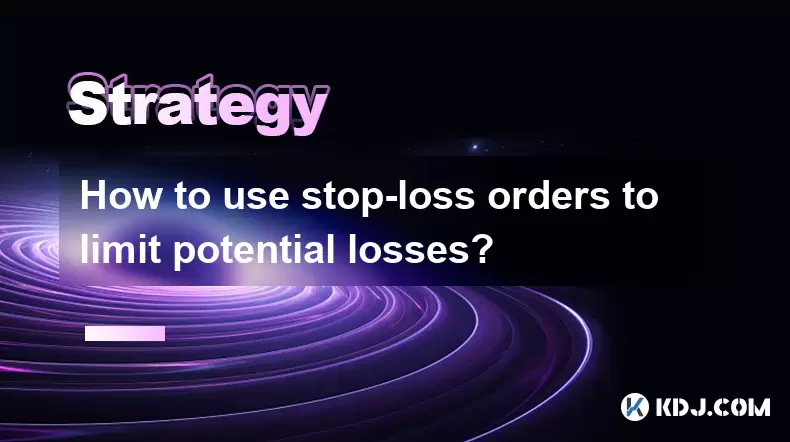
How to use stop-loss orders to limit potential losses?
Aug 08,2025 at 02:01pm
Understanding Stop-Loss Orders in Cryptocurrency TradingA stop-loss order is a risk management tool used by traders to automatically sell a cryptocurr...

How to read cryptocurrency charts and use technical analysis?
Aug 08,2025 at 11:08am
Understanding the Basics of Cryptocurrency ChartsCryptocurrency charts are graphical representations of price movements over time. These charts are es...
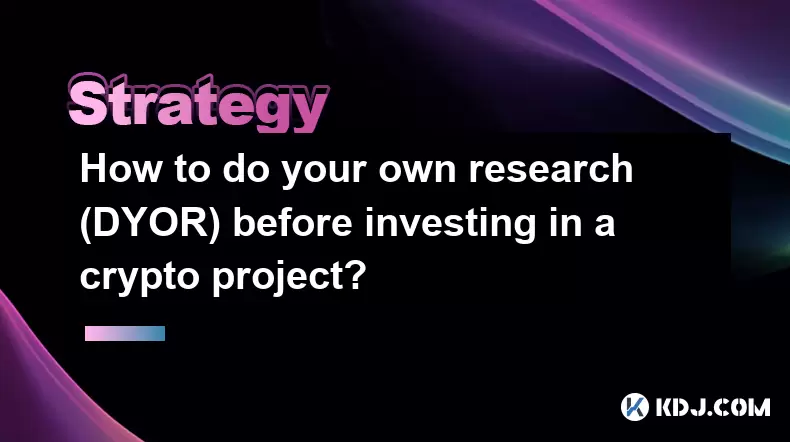
How to do your own research (DYOR) before investing in a crypto project?
Aug 08,2025 at 09:07pm
Understanding the Core Principles of DYOR in CryptocurrencyEngaging in due diligence before investing in any cryptocurrency project is essential to mi...
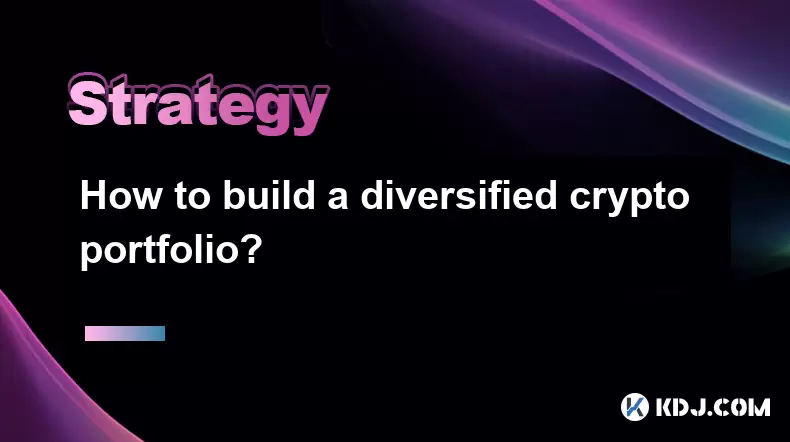
How to build a diversified crypto portfolio?
Aug 09,2025 at 12:21pm
Understanding the Importance of Diversification in CryptoDiversification in the cryptocurrency space is a strategy used to reduce risk by spreading in...

How to avoid common crypto investment mistakes?
Jul 13,2025 at 01:35am
Understanding the Risks of Crypto InvestmentInvesting in cryptocurrency can be highly rewarding, but it also comes with significant risks. One of the ...

What is a long-short crypto strategy?
Jul 15,2025 at 10:56am
Understanding the Basics of a Long-Short Crypto StrategyA long-short crypto strategy is an investment approach where traders simultaneously take long ...

How to use stop-loss orders to limit potential losses?
Aug 08,2025 at 02:01pm
Understanding Stop-Loss Orders in Cryptocurrency TradingA stop-loss order is a risk management tool used by traders to automatically sell a cryptocurr...

How to read cryptocurrency charts and use technical analysis?
Aug 08,2025 at 11:08am
Understanding the Basics of Cryptocurrency ChartsCryptocurrency charts are graphical representations of price movements over time. These charts are es...

How to do your own research (DYOR) before investing in a crypto project?
Aug 08,2025 at 09:07pm
Understanding the Core Principles of DYOR in CryptocurrencyEngaging in due diligence before investing in any cryptocurrency project is essential to mi...

How to build a diversified crypto portfolio?
Aug 09,2025 at 12:21pm
Understanding the Importance of Diversification in CryptoDiversification in the cryptocurrency space is a strategy used to reduce risk by spreading in...

How to avoid common crypto investment mistakes?
Jul 13,2025 at 01:35am
Understanding the Risks of Crypto InvestmentInvesting in cryptocurrency can be highly rewarding, but it also comes with significant risks. One of the ...

What is a long-short crypto strategy?
Jul 15,2025 at 10:56am
Understanding the Basics of a Long-Short Crypto StrategyA long-short crypto strategy is an investment approach where traders simultaneously take long ...
See all articles





















